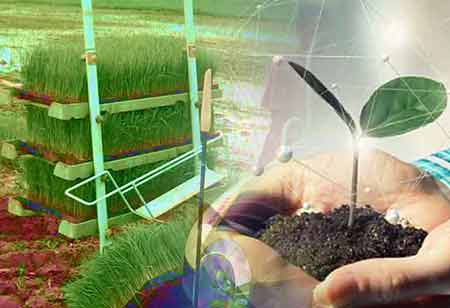Thank you for Subscribing to Agri Business Review Weekly Brief
Importance of Mixed Farming
Mixed farming yields fairly high agricultural returns due to efficient methods of farming,

By
Agri Business Review | Friday, August 19, 2022
Stay ahead of the industry with exclusive feature stories on the top companies, expert insights and the latest news delivered straight to your inbox. Subscribe today.
Mixed farming yields fairly high agricultural returns due to efficient methods of farming, excellent transport systems, proximity to the urban markets and rein ability of precipitation.
Fremont, CA: Mixed farming involves both crops and livestock. This is not to be perplexed with mixed cultivation, implying just a series of different crops. It is seen around the world. Mixed farming is essentially associated with densely populated, urbanized and industrialized societies, dependent upon high incomes for the sale of its products and upon manufacturing industry for the provision of its inputs.
Mixed farming yields fairly high agricultural returns due to efficient methods of farming, excellent transport systems, proximity to the urban markets and rein ability of precipitation. The cool-moist summers and comparatively mild-moist winters encourage the growth of hay crops and grasses in many undulating tracts and low flat lands. The pastures stay fresh all the year round, and large flocks of sheep and herds of cattle are grazed.
The main characteristics of mixed farming are that farms produce both crops and livestock, and the two enterprises are interwoven and integrated. The grass is an important crop in mixed farming system, occupying at least 20% of the cultivated land. In the maritime regions (Wales), grasses engage up to 75% of the cropped area. Therefore, the grass is treated with as much care as a cereal or cash crop.
The fertilizer application per hectare of arable land in mixed farming in Northwestern Europe is higher than that of any other world except Japan. Further, many farms, especially in Britain and the Netherlands, purchase grains and concentrate to feed their livestock. Furthermore, in mixed farming, several crops are grown. However, cereals dominate the cropland use, the leading grain varying with climate and soil.
Wheat in Europe & corn (maize) in the United States dominate the land use. A huge proportion of cereals is fed to farm animals or sold to manufacturers of feeding stuff. In Sweden, three-quarters of all the crops are consumed, and In Denmark, nine-tenths of all grains are fed to livestock.
A second major crop category in Europe is roots, turnips, potatoes and sugar beet. Potatoes are raised as vegetables for feeding pigs and cattle in most of the mixed farming areas of Europe, while potatoes are sold to distilleries in Germany. Sugar beet is usually sold to sugar factories.
Mixed farms are defined by the high cost of machinery and farm buildings, extensive use of manures and fertilizers and also the skill and expertise of fanners who need to know about all aspects of farming to grow and market their range of products successfully.
In mixed farming, the average holding size varies from 10 to 15 hectares in England and 40 to 100 hectares in the US and Canada. These farms are primarily owned & operated by family labor, and hired farm labor is uncommon. Moreover, tenant farming is usual.
Mixed farming has a three-fold advantage. First, it protects the farmer against the risk of poor prices and disease. In the second place, it spreads labor requirements more evenly throughout the year. Thirdly, it helps maintain soil fertility if crops are grown in rotation. Rather than growing the same crop in the same field, a succession of different crops is grown, which reduces the risk of plant disease.
In mixed farming, livestock is fed in different ways. The crop originated on the farm is generally fed to cattle and pigs. In winter, hay, forage crops, solid feeds and concentrates are provided to livestock. Livestock feed on crops grown on the farm and graze the pasture.
Mutually, their manure helps in maintaining the fertility of the land. This farming system makes judicious use of the available labor force as livestock require daily attention of the farmer and the family labour. The rising labor cost has, however, made it increasingly difficult to keep a variety of livestock and grow a wide range of crops.





